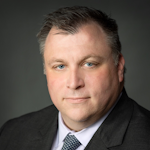FHWorld17: Training, Communication Stressed at Active Shooter Workshop
Firehouse World attendees left the San Diego Convention Center Monday morning to observe two full-scale active shooter demonstrations.
The first scenario included a mock disco on the third floor of a building at the San Diego Fire Department Training Academy where students played the part of shooting victims.
The darkened room, illuminated only by disco lights, had loud music playing as an armed man ran through the room with a fake gun and began shooting the partygoers.
Police officers arrived and spent some time clearing the scene and looking for the gunman while the “victims,” covered in moulage, started yelling for help.
Outside the building, Firehouse World attendees watched as additional police officers teamed up with area firefighters to create rescue task forces to assist the victims.
"The idea is to have the first contact team come in and have law enforcement clear a warm zone," said Yvonne de la Peña, executive director of the California Firefighter Joint Apprenticeship Committee. "When they have the shooter in another area, the rescue task forces come in so that fire can do rapid triage and start bringing the victims out.
The task forces consisted of three law enforcement officers and firefighter/EMS providers carrying small bags with supplies to control bleeding. After each rapid assessment, the firefighter tied a color-coded ribbon on the patients for triage.
During the assessments, police checked several of the victims for any weapons.
After the victims were triaged, additional crews entered the structure to remove the victims to an outside casualty collection point.
The second scenario was an active shooter scenario at an office building where workers were shot as police tried to subdue the shooter.
The training focuses on the unified response to violent incidents for fire and police agencies, de la Peña said.
"Every fire agency that came had to bring their counterpart from the law enforcement side," she said of the Cal-JAC program, which includes eight hours of classroom training.
She said the number of active shooter events across the country have created additional interest in the program, which has been around for several years.
"We're always getting requests for it...a lot of agencies have taken the training and are doing it at the local level now."
Cal-JAC's goal is to update the training and look at current trends for these responses and de la Peña said students often comment on the importance of the live scenarios.
"They say how much different it is when you actually have a live scenario with the confusion and the noise," de la Peña said. "There were personnel who couldn't hear the radio commands because of the loud music in the disco.”
Another challenge in this scenario is trying to work with people who are belligerent or drunk, which adds to the already tense situation.
"They are trying to take that chaos and be responsive," she said.
Back in the classroom, members of the Los Angeles Area Regional Training Group provided a lecture on active shooter response.
Instructors said fire and EMS responders need to apply immediate airway management and hemorrhage control to victims to increase their chances of survival.

Peter Matthews | Editor-in-Chief/Conference Director
Peter Matthews is the conference director and editor-in-chief of Firehouse. He has worked at Firehouse since 1999, serving in various roles on both Firehouse Magazine and Firehouse.com staffs. He completed an internship with the Rochester, NY, Fire Department and served with fire departments in Rush, NY, and Laurel, MD, and was a lieutenant with the Glenwood Fire Company in Glenwood, NY. Matthews served as photographer for the St. Paul, MN, Fire Department and currently is a photographer for the Fort Worth, TX, Fire Department.






